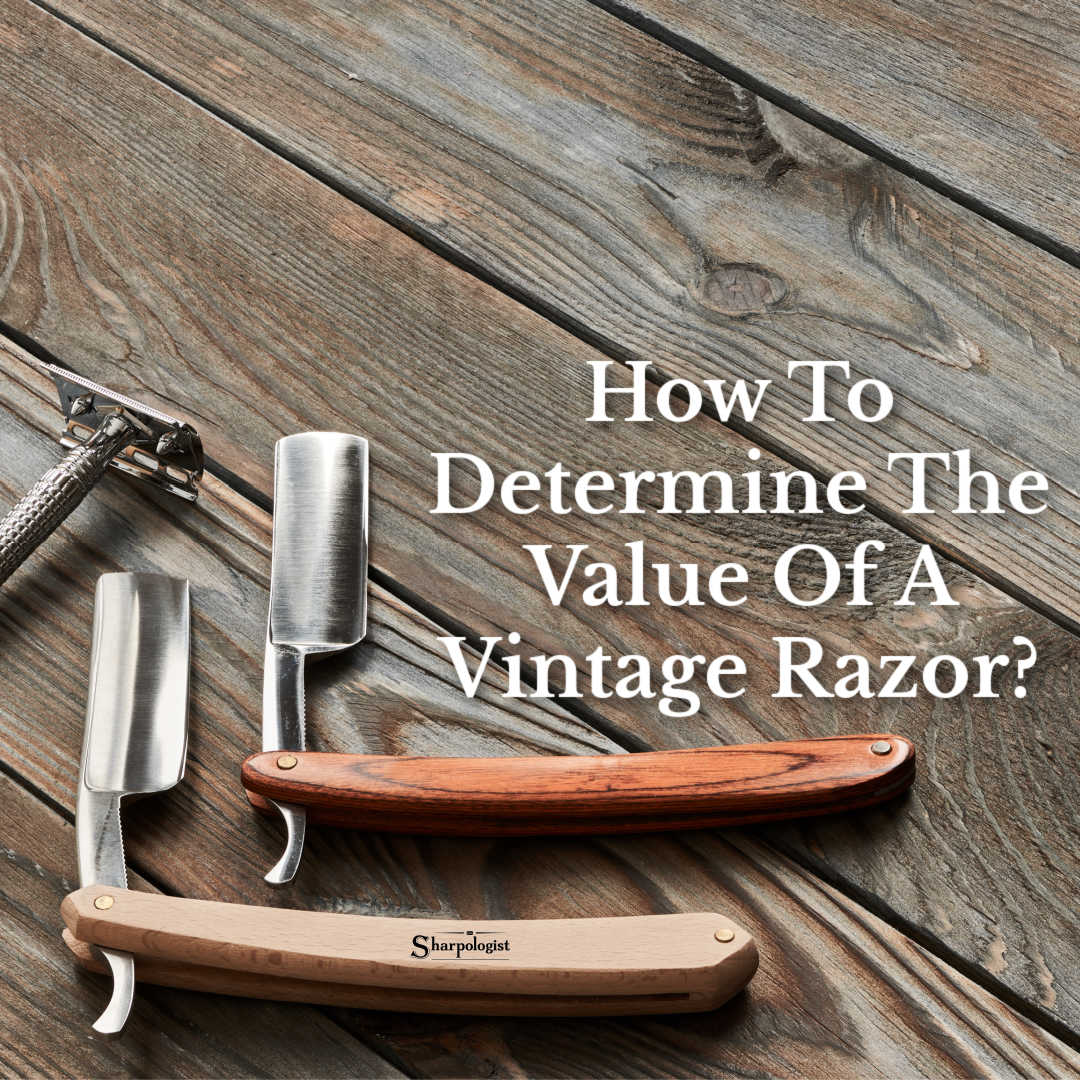
Are you interested in becoming a collector of vintage razors? Determining the value of a vintage razor can be a tricky task, especially if you are new to the idea. Many factors such as the brand, model, condition, and rarity affect the value of a vintage razor. I’ll guide you through the process of evaluating and determining the value of a vintage safety razor or straight razor!
What Factors Determine The Value Of A Vintage Razor?
Vintage razors are typically considered to be those that were manufactured prior to the 1960s. But beyond that simple fact, understanding all the other factors that make a razor vintage, collectors can gain a better appreciation for the historical significance and craftsmanship that went into these classic grooming tools. Identifying and valuing vintage razors is not only a great hobby, but also an opportunity to preserve a piece of cultural history.
Manufacturer
Collectors recognize certain makers as having higher quality or more desirable products, and are willing to pay a premium for them. For example, Merkur is a 2nd, 3rd, and 4th generation company located in Solingen, Germany, that has been producing razors for over a century and has a reputation for its quality craftsmanship and build of double edge razors.
Notable antique makers of straight razors include Greaves & Sons, Wade & Butcher, Kampfe Brothers, and Salem Markos and Bros. These companies are known for their signature shape, design, and durability and thus command a higher price due to their rarity.
Furthermore, razors that take blades that are no longer produced are harder to come by and thus, have a higher value. Therefore, the manufacturer of a vintage razor is an essential factor that can significantly influence its value.
Type Of Razor/Model
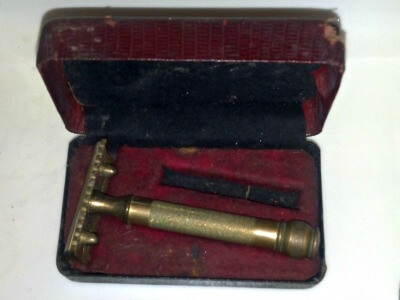
The value of a vintage razor is largely determined by its type, as different razors are designed for different purposes.
The brand and model of a vintage razor can have a significant impact on its value. Certain models that were only produced for a short period or in limited quantities can command higher prices.
Condition/Completeness
Condition plays a large role in determining the value of a vintage razor. If the razor is in good condition and is in high demand, the price will be higher. On the other hand, if the condition of the razor is not ideal with cosmetic flaws or missing parts, the price will be much lower.
The condition of a vintage straight razor’s blade edge is one of the most critical factors affecting its value. The blade edge, for instance, should be free from rust, chips or cracks which may affect its sharpness and usability. Additionally, the blade tang should be sturdy enough to hold the handle properly in position. Any corroded or loose parts can indicate poor maintenance or even improper storage.
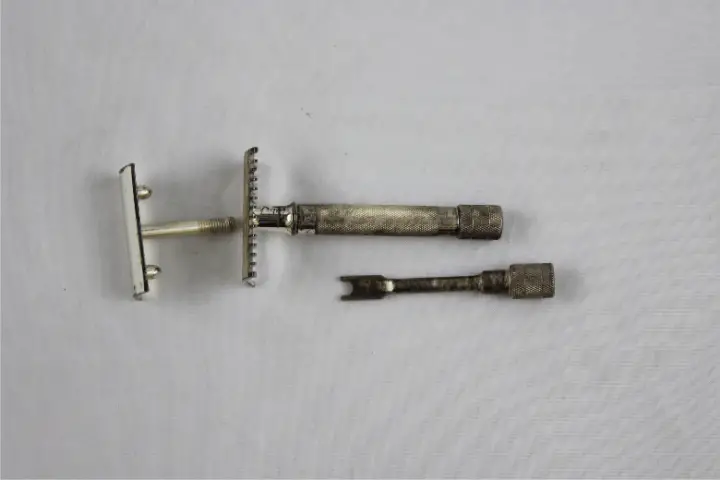
Completeness is also important for collectors looking to add rare pieces to their collection. A razor that has all its original components intact will command a higher price than one that’s missing bits and pieces like the box it came with or a protective case. For example, a vintage Gillette “Psycho” razor is worth much more if it includes its original security key.
Some razors are highly valuable because they were only produced during specific years as commemorative items and came with unique features such as decorative engravings – missing them will result in lower resale value. So if you’re thinking about investing in a vintage razor, make sure it’s complete and ideally comes with documentation about its history!
Rarity
Rarity is an important factor in determining the value of a vintage razor due to the fact that the more rare a particular model is, the more desirable it is to collectors. This is because vintage razors that are rare may be harder to come by, thus making them more sought-after and valuable.
Furthermore, rare vintage razors typically have higher demand and therefore can fetch higher prices at auction. Additionally, the more rare a vintage razor is, the more likely the product is to be in good condition, as it is less likely to have been used over time and more likely to be kept in a pristine condition. Collectors are thus willing to pay a premium for a vintage razor that is considered rare.
Significance (Historical Or Otherwise)
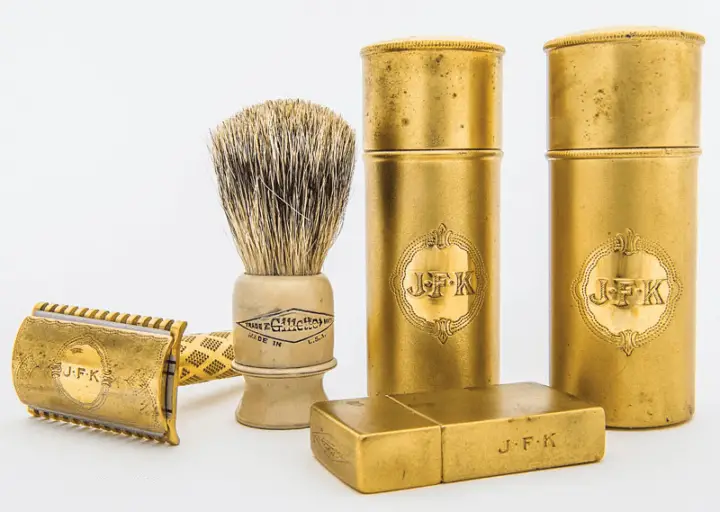
Assessing the historical significance of a vintage razor is an important factor in determining its value. Razors that have been used by famous figures or during significant events can be highly sought after by collectors. For example, a razor owned and used by President Truman sold for $8,000 at auction. Similarly, razors used during wars such as World War I and II are also valuable due to their historical significance.
Furthermore, the design and technology of older razors can also hold importance in terms of history. For instance, Gillette’s safety razor patented in 1901 revolutionized shaving practices worldwide, making early examples or prototypes a sought-after item among collectors today.
Lastly, some vintage razors were crafted using old-world techniques that make them unique in today’s mass-produced world; they represent not only functional grooming tools but also artistic expressions of craftsmanship from another era.
Quality
The quality factor that determines the value of a vintage razor is largely determined by its craftsmanship and durability. Many vintage razors have chrome plating that stands up to regular wear and tear, with some even lasting for years. The small, thick frame and the dense weight of the dense brass inner body also make a vintage razor feel more substantial and valuable.
Materials
Materials such as brass, amber, enamel, and metals all have an impact on the value of a vintage razor. Even plastic razors such as those make with Bakelite can be sought after.
Age
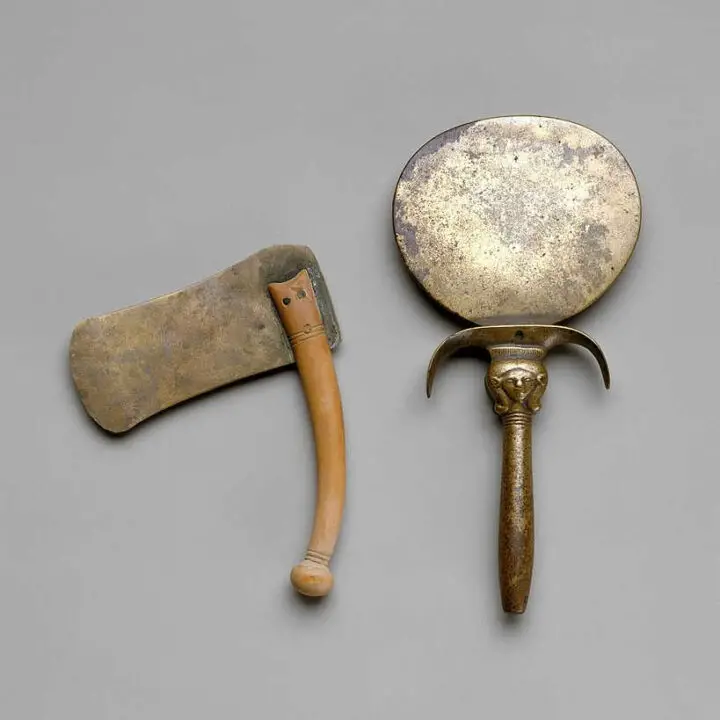
When considering age as a factor in valuing a vintage razor, be aware that older does not necessarily mean more valuable. An essential aspect to consider is whether there is still demand for that particular model or brand among collectors and enthusiasts. Overall, understanding how rarity and age interact within the context of the specific vintage razor will help you gauge its worth accurately.
Production Techniques/Craftsmanship
What production techniques determine the value of a vintage razor? The value of a vintage razor is determined by the production techniques used during its era.
For example, from the 1500s to the 1700s, straight razor makers used crude designs, but in the 1810s to 1820s, they added a shoulder to the blade and downsized the tool, as well as introducing a slight curve to the scales. In the next decade, the steel in the blade was mixed with silver, and English razor manufacturers began to mark their products with their monarch’s sign.
From 1830 to 1840, wedge blades became more popular, and makers began to pattern the scales with silver pins and press horns for bow-shaped handles. Between 1840 and 1870, wedge blades became even more popular, and companies began to etch their marks and names onto the blade tangs.
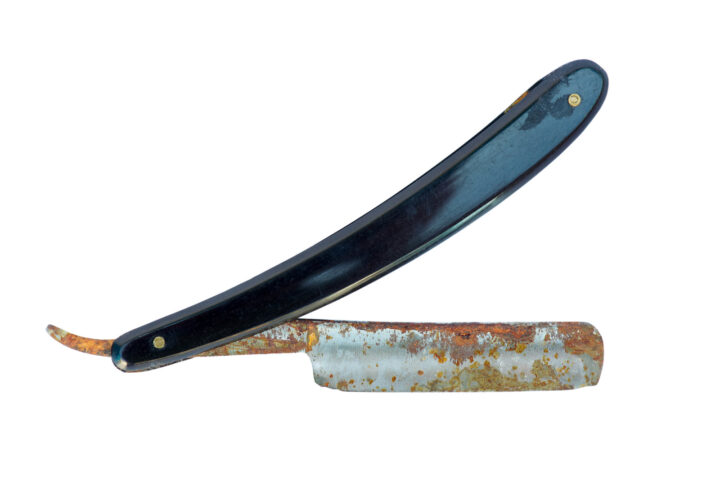
Finally, in the late 1800s, celluloid handles became mainstream, and machines began to forge blades. Antique straight razors from this era were often marked with “hand-made” or “hand-forged.”
Razors that were handmade by skilled artisans or manufactured by reputable companies tend to be more valuable compared to lower quality, mass-produced models.
In addition, the design and aesthetic appeal of the razor can also influence its worth. Unique designs that incorporate intricate patterns, engravings, or ornamentation typically increase the value of a vintage razor compared to plain-looking models.
Summing Up
In conclusion,the value of a vintage razor is determined by a range of factors, including its age, rarity, condition and brand. Collectors should be aware of these factors when assessing the worth of their finds. They should also do plenty of research to ensure they are familiar with current market prices for vintage razors. Most importantly, collectors should only purchase items which appeal to them personally and that bring them joy.
About The Author: Otto Wright is a wet shaver and freelance author.

hello Mark,
i just want to thank you for all your interesting articles you wrote and still wrting for us: I learned a lot about wet shaving ‘s world and also because of you now i’m a razors collector: ’till now I ‘ve collected, as you kindly answered to my mail one year ago, ” second hand” razors as Mongoose, Paradigm, LASSC BBS1, Tradere etc., but now I started with the vintage ones and this article enlight me about criterias to considere when i’ll have the chance to get one….Thank you very much!!!
Comments are closed.